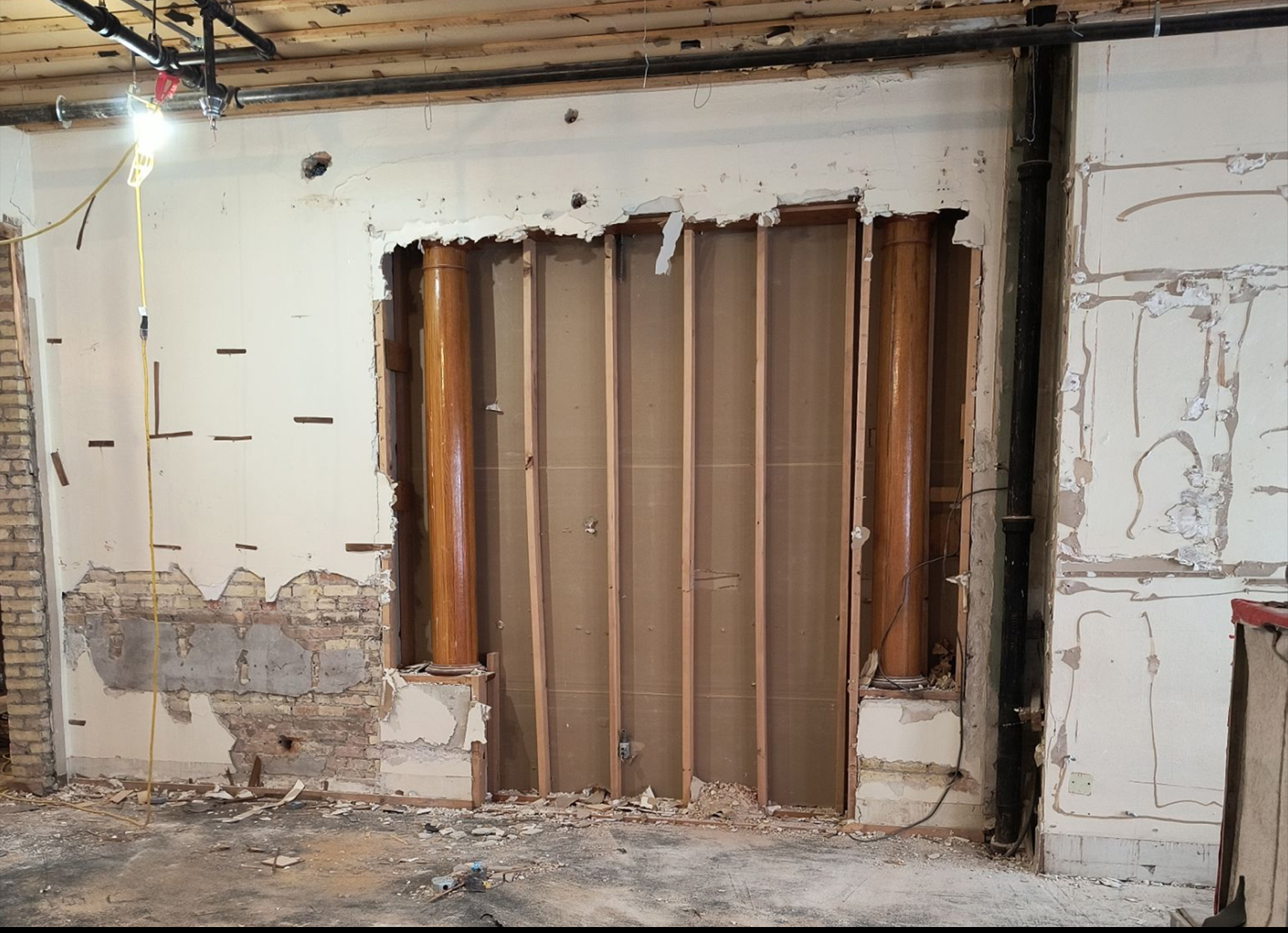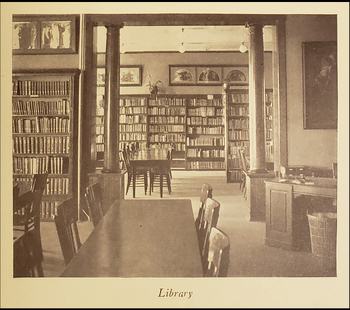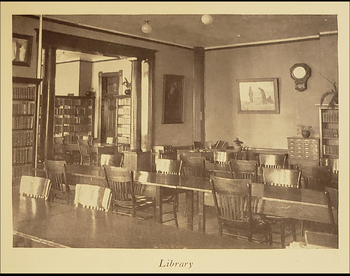
 November 1, 2024
November 1, 2024
The process of abatement in the renovation of Old Main began in early October. The pillars that were a part of the original campus library were revealed during work on the second floor. When the library moved to its current home in 1959, the space was converted for use as classrooms. The pillars were enclosed when constructing the walls that separated the classroom areas. Most recently those classrooms housed business classes.
Dr. James Warren Neilson discusses the activity that led to the current library building, now known as Byrnes Quanbeck Library, in his book, The School of Personal Service: A History of Mayville State College. Following are excerpts from the book that tell the story of how Mayville State got its current library and the move to the new building from Old Main in 1959.
“Meanwhile the State Board of Higher had formulated a grandiose project which it hoped to sell to the people and to the  legislature which would meet early in 1957. North Dakota had provided a bonus to its men who served in the Second World War, and it had levied special taxes on beer, liquor, and cigarettes to raise funds to pay off the bonds sold to finance the bonus. Those taxes yielded about $1,500,000 per year, and the bonds would soon be retired. The State Board would propose to the legislature that the taxes be continued, and that the funds derived from them be used to construct much needed buildings on the various college and university campuses. Mayville State would be allotted $400,000 for a building which would contain a new library, a science facility with classrooms and laboratories, and whatever the Department of Physical Education might need for its programs.
legislature which would meet early in 1957. North Dakota had provided a bonus to its men who served in the Second World War, and it had levied special taxes on beer, liquor, and cigarettes to raise funds to pay off the bonds sold to finance the bonus. Those taxes yielded about $1,500,000 per year, and the bonds would soon be retired. The State Board would propose to the legislature that the taxes be continued, and that the funds derived from them be used to construct much needed buildings on the various college and university campuses. Mayville State would be allotted $400,000 for a building which would contain a new library, a science facility with classrooms and laboratories, and whatever the Department of Physical Education might need for its programs.
“The legislature responded favorably to the pleas of the Board and the various presidents. Mayville State got its appropriation, but the figure was cut to $300,000. It would be enough to build a new library and science hall, both under the same roof, but the physical education facility would have to be forgotten for the time being. (Mayville State President) DeLong was jubilant: he had secured the first building appropriation in 28 years!
“By November Johnson and Lightowler had drawn plans for the library-science building. According to their designs the library wing would be built in the form of a square, 97 feet on a side; the science hall wing would measure 57 feet by 117. The library would have space for stacks holding 60,000 volumes, or about double the holdings of the library that then functioned on the second floor of Old Main, and its reading room would seat 110 persons. The Board would open bids on December 15, and if all went well, construction could be undertaken in the spring. DeLong’s good fortune held. The Roel Construction Company’s bid of $164,000 lay within the figure that the Board could accept for the general contract, and the members accepted it. There was no ceremonial turning of the first spadeful of earth. Instead the construction company broke ground on April 14, using a bulldozer to turn, if not the first spadeful, then the first blade full.
“In February (1959) the Roel Construction Company and the subcontractors declared that the library-science building was completed. The Board accepted the building, and the immediate problem facing DeLong was that of moving the existing library holdings into the new building. He and Clenora E. Quanbeck, the librarian, arrived at a novel solution: why not a student book brigade? There were about 500 students then enrolled, DeLong explained, and if each student carried sixty books, the total holding of 30,000 volumes could be moved easily. Relying on her staff of student assistants to supervise the work and get the books properly shelved in the new library, Miss Quanbeck carried out the book brigade project without incident. And the moved freed space in Old Main that could be converted into three large, much needed classrooms.”
